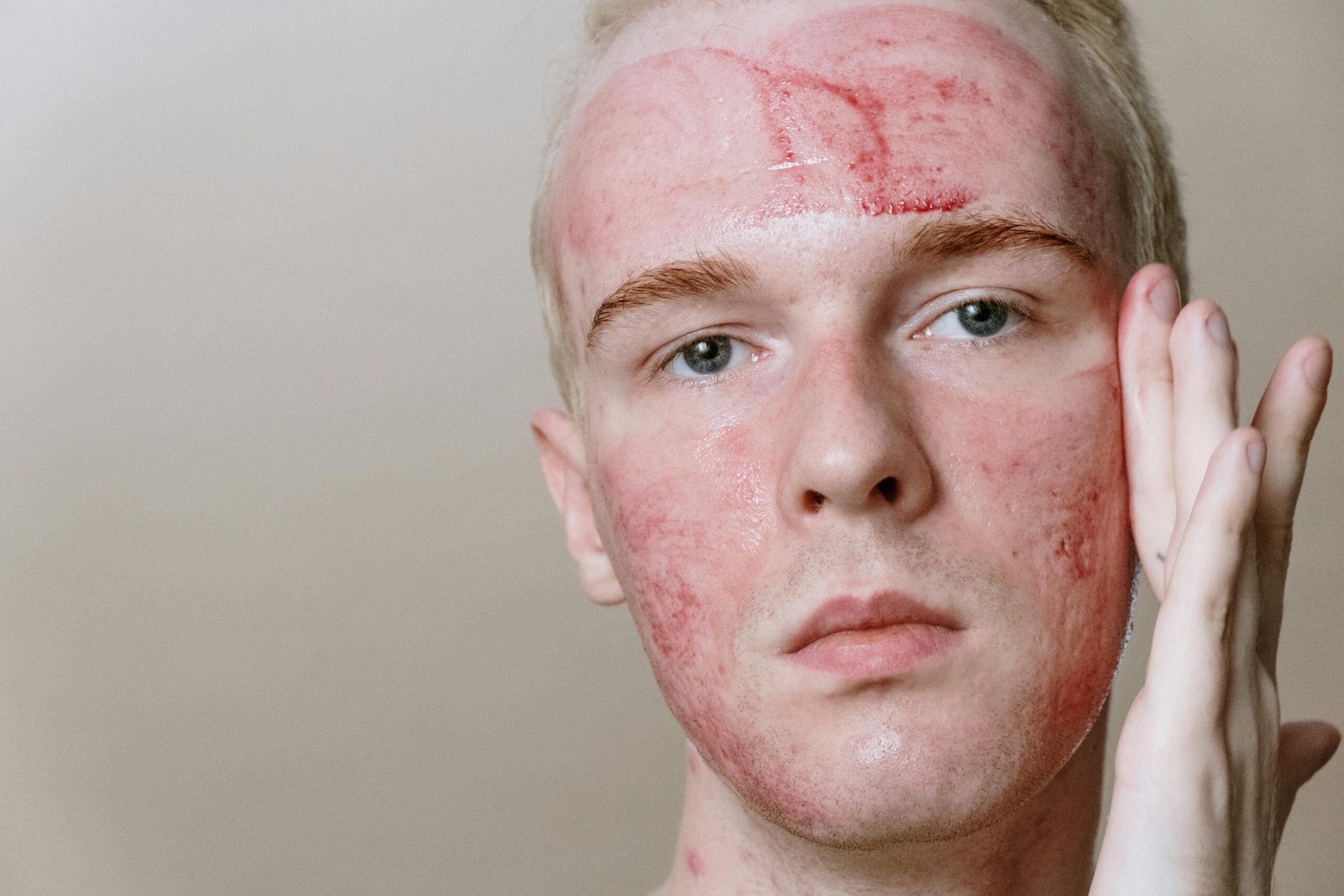Hyperpigmentation is a common skin concern characterized by dark patches or spots that can develop due to various factors such as sun exposure, hormonal changes, or acne scars. Crafting a skincare routine tailored specifically to address hyperpigmentation can significantly improve the appearance of your skin and help achieve a more even complexion.
In this guide, we’ll walk you through the essential steps and ingredients needed to create an effective routine to combat hyperpigmentation.
Understanding Hyperpigmentation
Hyperpigmentation occurs when excess melanin, the pigment responsible for skin color, is produced and deposited in certain areas of the skin. This can result in uneven skin tone and dark spots. Common types of hyperpigmentation include:
- Sunspots: Dark spots caused by prolonged sun exposure.
- Post-Inflammatory Hyperpigmentation (PIH): Dark spots left after an inflammatory skin condition, such as acne or eczema.
- Melasma: Hormone-induced dark patches often seen on the face, particularly during pregnancy.
Addressing hyperpigmentation requires a targeted approach that includes ingredients known for their brightening and skin-renewing properties.
Key Ingredients for Hyperpigmentation
1. Vitamin C
Vitamin C is a powerful antioxidant that helps brighten the skin and reduce the appearance of dark spots. It inhibits melanin production and neutralizes free radicals that can cause skin damage. Look for serums or creams containing stable forms of Vitamin C, such as ascorbic acid or sodium ascorbyl phosphate.
2. Retinoids
Retinoids, including retinol and tretinoin, promote cell turnover and accelerate the shedding of dead skin cells. This helps fade dark spots and even out skin tone over time. Retinoids also boost collagen production, improving skin texture and reducing the appearance of hyperpigmentation.
3. Niacinamide
Niacinamide, or Vitamin B3, is known for its ability to reduce melanin production and improve skin barrier function. It helps even out skin tone, reduce redness, and enhance the skin’s overall radiance. Incorporate niacinamide into your routine through serums or moisturizers.
4. Hydroquinone
Hydroquinone is a skin-lightening agent that works by inhibiting the enzyme tyrosinase, which is involved in melanin production. It’s highly effective for treating hyperpigmentation but should be used under the guidance of a dermatologist due to potential side effects with prolonged use.
5. Alpha Hydroxy Acids (AHAs)
AHAs, such as glycolic acid and lactic acid, exfoliate the skin’s surface, removing dead skin cells and revealing brighter skin underneath. Regular use of AHAs helps fade dark spots and improve skin texture.
6. Sunscreen
Daily sunscreen application is crucial for preventing further darkening of hyperpigmented areas. Choose a broad-spectrum sunscreen with an SPF of 30 or higher to protect your skin from UV damage and prevent new spots from forming.
Steps to Create Your Skincare Routine
1. Cleansing
Start with a gentle cleanser to remove impurities and prepare your skin for the treatment products. Avoid harsh cleansers that can irritate the skin and worsen hyperpigmentation. Look for a cleanser with brightening ingredients like Vitamin C or glycolic acid.
2. Exfoliation
Incorporate exfoliation into your routine 2-3 times a week to remove dead skin cells and enhance the effectiveness of your treatment products. Choose exfoliants with AHAs or BHAs (like salicylic acid) to promote cell turnover and fade dark spots.
3. Treatment
Apply targeted treatments that address hyperpigmentation. A Vitamin C serum in the morning can help brighten the skin and protect against environmental damage. At night, use a retinoid or niacinamide serum to promote cell renewal and reduce melanin production. If using hydroquinone, apply it as directed by your dermatologist.
4. Moisturizing
Hydrate your skin with a moisturizer to maintain a healthy skin barrier and support the effectiveness of your treatment products. Look for moisturizers that contain calming ingredients like hyaluronic acid and niacinamide to soothe and hydrate the skin.
5. Sun Protection
Finish your morning routine with a broad-spectrum sunscreen to protect your skin from UV rays. Sunscreen helps prevent further pigmentation and protects the skin from sun damage. Reapply every two hours if you’re spending extended time outdoors.
Tips for Managing Hyperpigmentation
- Consistency is Key: Stick to your routine and be patient. Hyperpigmentation can take time to fade, so consistent use of the right products is essential.
- Avoid Irritation: Overuse of active ingredients can irritate the skin and worsen pigmentation. Introduce new products gradually and monitor your skin’s response.
- Patch Test: Always perform a patch test before using new products to avoid adverse reactions.
- Consult a Dermatologist: For persistent or severe hyperpigmentation, consult a dermatologist for personalized treatment options and professional guidance.
Conclusion
Creating a customized skincare routine for hyperpigmentation involves selecting the right ingredients and following a consistent regimen. By incorporating products with Vitamin C, retinoids, niacinamide, AHAs, and sunscreen, you can effectively target dark spots and achieve a more even skin tone. Remember, patience and consistency are crucial for seeing results. Tailor your routine to your skin’s needs and consult with a dermatologist for the best outcomes.
FAQs
1. How long does it take to see results with a skincare routine for hyperpigmentation?
Results can vary depending on the severity of hyperpigmentation and the products used. Generally, you may start to see improvements within 6-8 weeks, with more significant results after 3-6 months of consistent use.
2. Can I use retinoids and Vitamin C together?
Yes, you can use retinoids and Vitamin C in your skincare routine. It’s best to use Vitamin C in the morning and retinoids at night to avoid potential irritation. Start slowly and monitor your skin’s response.
3. Is hydroquinone safe for long-term use?
Hydroquinone is effective for treating hyperpigmentation but should be used under the guidance of a dermatologist. Long-term use can cause side effects such as thinning skin or ochronosis (a blue-black discoloration). Your dermatologist will advise on safe usage.
4. Can sunscreen prevent hyperpigmentation from worsening?
Yes, daily sunscreen application is crucial in preventing further hyperpigmentation. Sunscreen protects your skin from UV damage, which can exacerbate existing dark spots and lead to new pigmentation.
5. What is the difference between AHA and BHA exfoliants?
AHAs (Alpha Hydroxy Acids) are water-soluble acids that exfoliate the skin’s surface, making them ideal for dry and sun-damaged skin. BHAs (Beta Hydroxy Acids), like salicylic acid, are oil-soluble and penetrate deeper into pores, making them suitable for oily and acne-prone skin.
6. How can I prevent irritation when using active ingredients?
To prevent irritation, introduce active ingredients gradually into your routine. Use them on alternate days initially and increase frequency as your skin builds tolerance. Also, avoid using multiple strong actives simultaneously and always follow with a hydrating moisturizer.



